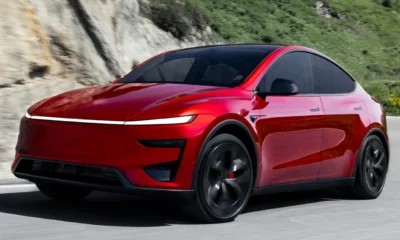Automobile
Why Tesla Model 3 is outselling sedans and why the Ford F-150 still rules America’s roads
From electric icons to classic pickups, meet the 5 best cars in the USA that drivers can’t stop buying — and the surprising reasons behind their dominance.

In a country known for its love of the open road, cars are more than just machines — they’re a lifestyle, a status symbol, and in many cases, a second home. Every year, auto giants like Ford, Tesla, and Toyota battle it out to claim the top spot in American hearts (and garages).
ALSO READ : Top 5 Bestselling Cars Trucks and SUVs of 2025 Revealed So Far
But in 2025, the list of the 5 best cars in the USA reflects not just horsepower or mileage — but a shifting consumer mindset that favors efficiency, tech, comfort, and legacy.
Table of Contents
Let’s take a closer look at the vehicles Americans are loving most this year — and why.
1. Ford F-150 – The Undisputed King of American Roads
Why It’s the Best: Power, reliability, and unmatched towing performance
Starting Price: $38,000 (approx.)
The Ford F-150 has been America’s best-selling vehicle for over four decades, and 2025 is no different. Whether you’re hauling lumber in Texas or camping in Colorado, the F-150 offers performance that’s simply hard to beat.
What’s new? The 2025 version brings hybrid powertrains, Pro Power Onboard generators, and hands-free driving technology (BlueCruise) — making it not just a pickup truck but a mobile workstation.
Ford CEO Jim Farley recently said, “We’re not just building trucks; we’re building smart machines that move America.” And based on sales numbers, it seems Americans agree.

2. Tesla Model 3 – The Future Is Already in Your Driveway
Why It’s the Best: Electric efficiency meets cutting-edge technology
Starting Price: $39,990 (approx.)
When Elon Musk said he wanted to make electric cars affordable for the masses, he wasn’t kidding. The Tesla Model 3 isn’t just the best-selling EV in the USA — it’s one of the best-selling cars, period.
With features like Autopilot, over-the-air updates, a 15-inch touchscreen, and a range of up to 358 miles, the Model 3 is redefining what it means to drive smart. And let’s not forget its 0-60 mph acceleration in under 4 seconds.
For eco-conscious Americans and tech lovers alike, the Model 3 is a no-brainer. As one Tesla owner in California put it: “It’s not a car, it’s a gadget on wheels.”

3. Chevrolet Corvette C8 – America’s Affordable Supercar
Why It’s the Best: Exotic styling, mid-engine performance, and legendary status
Starting Price: $66,000 (approx.)
The Chevrolet Corvette C8 broke every mold when it launched as a mid-engine sports car, and it continues to make waves in 2025. It’s aggressive. It’s loud. It’s unapologetically American — and it turns heads wherever it goes.
With a 6.2-liter V8 pushing out 490 hp and a 0-60 mph time of under 3 seconds, this beast delivers Ferrari-level thrills at a third of the price.
Its only downside? Waiting lists. The demand is so high, some buyers are paying premium markups just to get their hands on one. Even Jay Leno called it “the most bang-for-your-buck performance car in the world.”

4. Toyota Camry – The Everyday Hero
Why It’s the Best: Reliability, comfort, and unbeatable resale value
Starting Price: $27,500 (approx.)
The Toyota Camry may not generate buzz like the Corvette or Model 3, but in the real world, this car gets things done. It’s been the go-to sedan for families, students, and rideshare drivers alike.
Why? It’s bulletproof. Low maintenance costs, excellent fuel economy, and now a hybrid option that offers 50+ MPG make it a sensible — and stylish — pick. The 2025 model even adds advanced safety features like Lane Tracing Assist and Pre-Collision Systems as standard.
In the words of one reviewer: “It may not wow you, but it’ll never let you down.” That’s the kind of quiet confidence only a Camry can deliver.

5. Ram 1500 – Luxury Meets Utility
Why It’s the Best: Smoothest ride in a truck, loaded with luxury features
Starting Price: $39,000 (approx.)
If the Ford F-150 is the working-class hero, the Ram 1500 is the gentleman’s pickup. Known for its best-in-class interior and air suspension system, this truck offers a ride that’s closer to an SUV than a workhorse.
The 2025 Ram 1500 comes with a 12-inch touchscreen, leather upholstery, and even reclining rear seats in higher trims. Add to that a towing capacity of up to 12,750 lbs and you’ve got a machine that’s as capable as it is classy.
Even critics agree — MotorTrend named it “Truck of the Year” multiple times, and it’s one of the few pickups that attracts buyers from luxury brands.

2022 Ram 1500 Rebel G/T rear 3/4
Conclusion: Which One Is Right for You?
Whether you’re chasing electric dreams, need a rugged work truck, or want to own an American icon, there’s a car on this list that fits your needs — and your budget.
- Want tech-forward driving? Go for the Tesla Model 3.
- Need practicality and value? Choose the Toyota Camry.
- Looking to tow and haul with pride? Ford F-150 is your answer.
- Dream of track performance? The Corvette C8 is waiting.
- Crave comfort and capability? The Ram 1500 delivers both.
These aren’t just vehicles. They’re reflections of the American lifestyle — ever-evolving, boldly innovative, and built to last.
Business
Ford CEO Jim Farley warns EV sales could plunge by 50% as $7,500 tax credit ends…
The end of federal incentives may slash U.S. electric vehicle sales in half, forcing Ford and rivals to rethink their EV strategies.

Ford Motor Company CEO Jim Farley has delivered one of the starkest warnings yet for the U.S. electric vehicle (EV) market, saying demand could collapse by nearly 50% once federal tax incentives disappear.
Speaking at Ford’s “Pro Accelerate” event in Detroit on Tuesday, Farley said EV sales, which are currently hovering around a record 10–12% of the U.S. auto market, could sink to just 5% starting next month.
“We’re going to find out in a month. I wouldn’t be surprised if EV sales in the U.S. go down to 5%,” Farley said.
The policy shift
The forecast comes as the $7,500 federal EV incentive ends under the Trump administration’s “One Big Beautiful Bill Act.” The legislation removed blanket EV subsidies but added perks for vehicles assembled in the U.S., regardless of whether they are electric or combustion-based.
The policy change is already altering consumer behavior. Cox Automotive projects EV sales hit a record 410,000 units in Q3 2025, a 21% jump year-on-year, as buyers rushed to take advantage of the expiring credit. But analysts expect demand to slump once the incentive is gone, with many buyers effectively “pulling forward” their purchases.
Expensive cars, cautious buyers
Farley was blunt about the challenge facing automakers:
“Customers are not interested in the $75,000 electric vehicle. They find them interesting. They’re fast, they’re efficient, you don’t go to the gas station, but they’re expensive.”
Ford currently sells models like the F-150 Lightning, which can top $90,000, and the Mustang Mach-E, a crossover positioned against rivals from Tesla and Hyundai. But Farley noted that customers seem more comfortable with hybrids and “partial electrification” for now, calling them “easier for customers to accept.”
Industry-wide ripple effects
The uncertainty could have major consequences for automakers’ massive EV investments. Ford has spent billions on EV development and battery plants across the U.S., but Farley acknowledged those facilities may now face “more stress.”
“We’ll fill them, but it will be more stress, because we had a four-year predictable policy. Now the policy changed. We all have to make adjustments,” he said.
The broader industry is watching closely. Tesla, General Motors, and Hyundai have all banked on rapid EV adoption to justify their expansion plans. The sudden shift could force a rethink in pricing, production, and supply chain strategies.
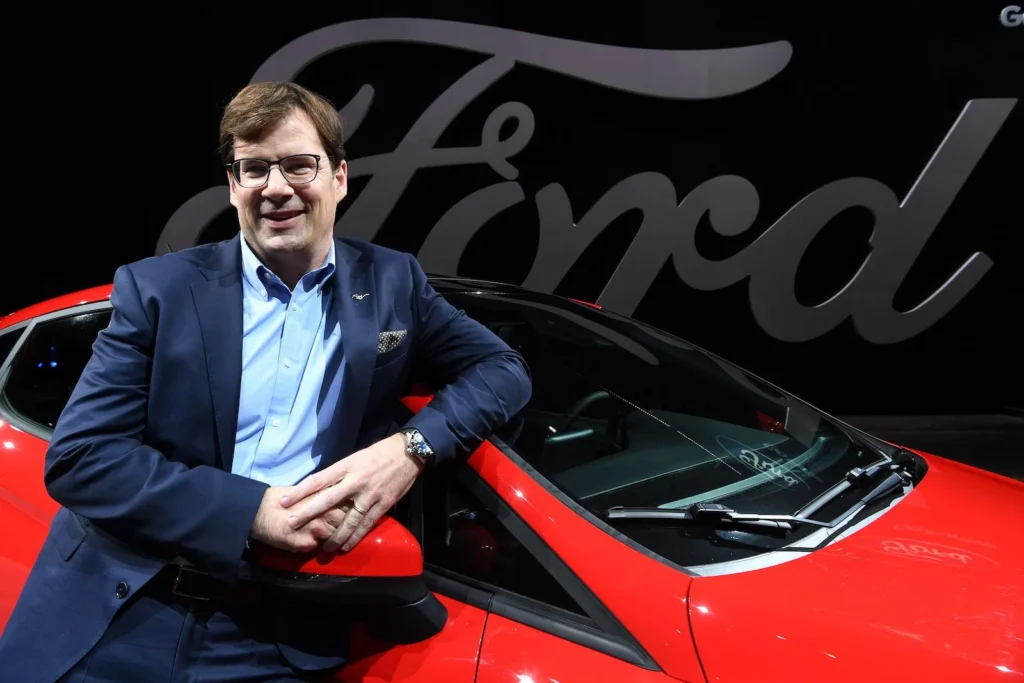
Skilled trades and the “essential economy”
Farley’s comments came during a Ford-hosted discussion on skilled labor and education. The event drew executives and public officials who emphasized the need for training workers to support both traditional auto manufacturing and the emerging EV ecosystem.
While Farley expressed optimism that EVs will remain “a vibrant industry,” he admitted it will be “way smaller than we thought,” at least in the near term. For automakers, the message is clear: the road to electrification just got a lot bumpier.
For more Update http://www.dailyglobaldiary.com
Automobile
Tesla Model Y Performance shocks with speed upgrades but do families really need a 460bhp SUV?
The revised Model Y Performance brings blistering acceleration, sharper suspension, and subtle design tweaks—but critics ask if it makes sense for the average family buyer.
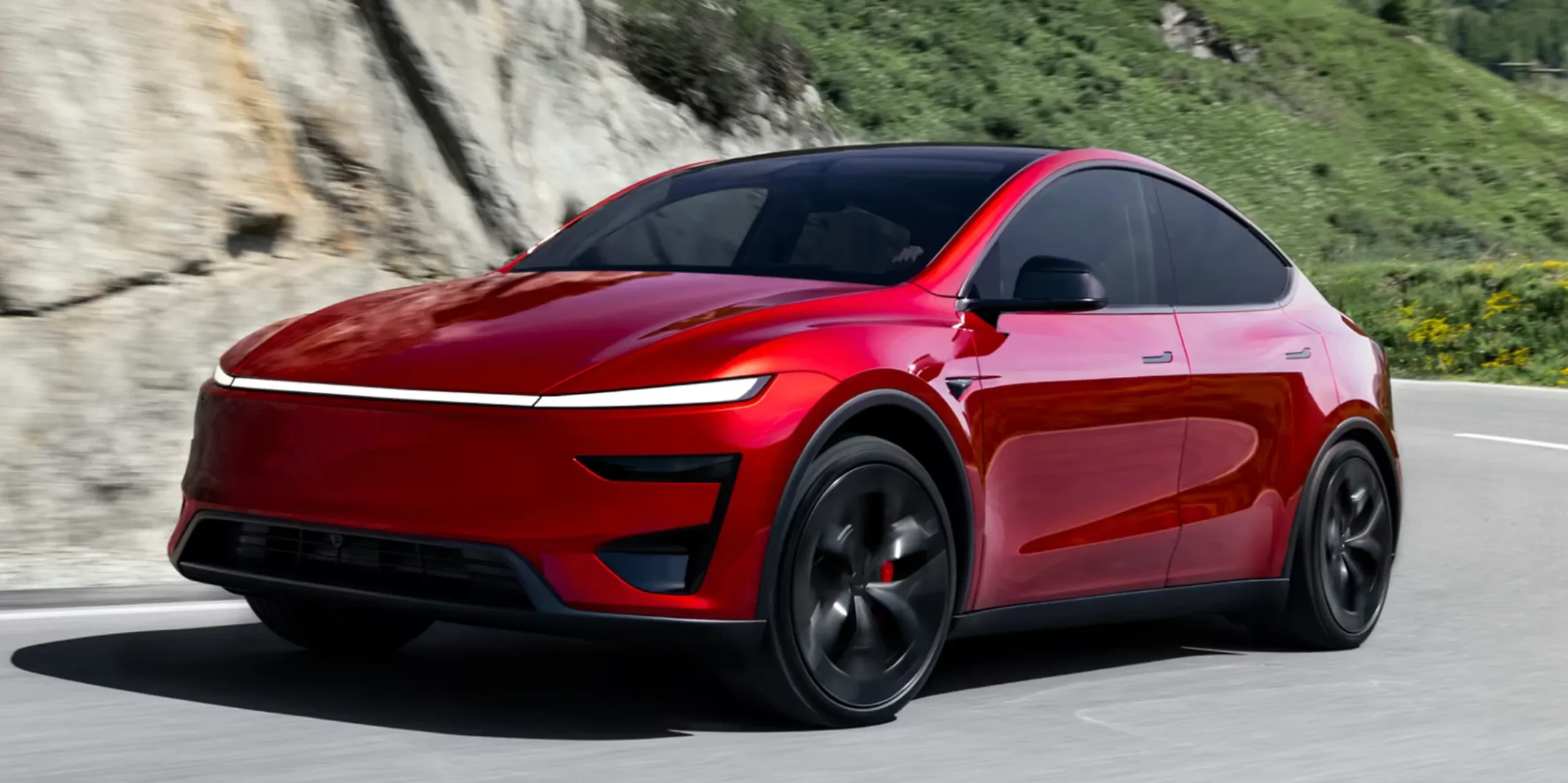
When Tesla announced the revised Model Y Performance, many assumed it would simply be another power bump on an already rapid electric SUV. On paper, it is: 460bhp, 0-62 mph in 3.5 seconds, and the obligatory “Insane Mode” launch control. But look closer, and there’s more nuance—plus an open question: who exactly needs this much power in a family EV?
A power boost with hidden refinements
The Model Y Performance now uses the LG 5M battery pack borrowed from the Tesla Model 3 Performance. With 79kWh usable capacity, it manages to squeeze in more energy without extra weight, resulting in nearly the same efficiency as the Long Range AWD. Efficiency might not sound as sexy as acceleration, but it matters when you’re ferrying kids to school rather than sprinting down an autobahn.
Alongside the battery, engineers squeezed out 40 extra horsepower over the last version. In today’s EV arms race, that means a 0-62mph sprint in just 3.5 seconds—numbers once reserved for supercars. Stick it in “Insane” mode, and it will repeat that feat multiple times.

Subtle styling, serious aero tweaks
At first glance, the Model Y Performance doesn’t scream transformation. Yes, there’s a new bumper, 21-inch Arachnid 2.0 wheels, a carbon lip spoiler, and glossy black mirrors. But the real story is underneath: the aero work reduces lift by 64% and drag by 10%. Less lift means more stability at speed, while less drag is a welcome efficiency boost. And if you care about details, those flashy red brake calipers? Same as the AWD version—just painted red.
Cabin upgrades and comfort
Inside, Elon Musk’s team focused on refinement. The central touchscreen has grown slightly, now crisper with more pixels. Sportier seats get extra bolstering and electric thigh supports, while carbon trim dots the dashboard and door inserts. Rear passengers aren’t left behind: the 8-inch rear entertainment screen remains, as does the panoramic glass roof.
Noise, vibration, and harshness (NVH) levels have also been significantly improved. On smooth Swiss roads, testers reported cabin noise so low that you could “hear your passenger breathing.” That level of silence in an EV SUV is no small achievement.
Driving experience: intention over fun
Tesla didn’t just rely on raw power. The Y Performance gets adaptive suspension, revised bushings, and reinforced rear bracing. This means sharper handling and smoother ride control. It’s not a night-and-day difference compared to the Long Range AWD, but it does feel more deliberate, more focused. Still, the hefty weight makes quick direction changes less playful. The steering remains accurate but numb, and while braking is solid, it lacks feedback.
At 75% effort, though, the car feels exactly as intended—rapid, secure, and composed. Which, frankly, is what most families will want.
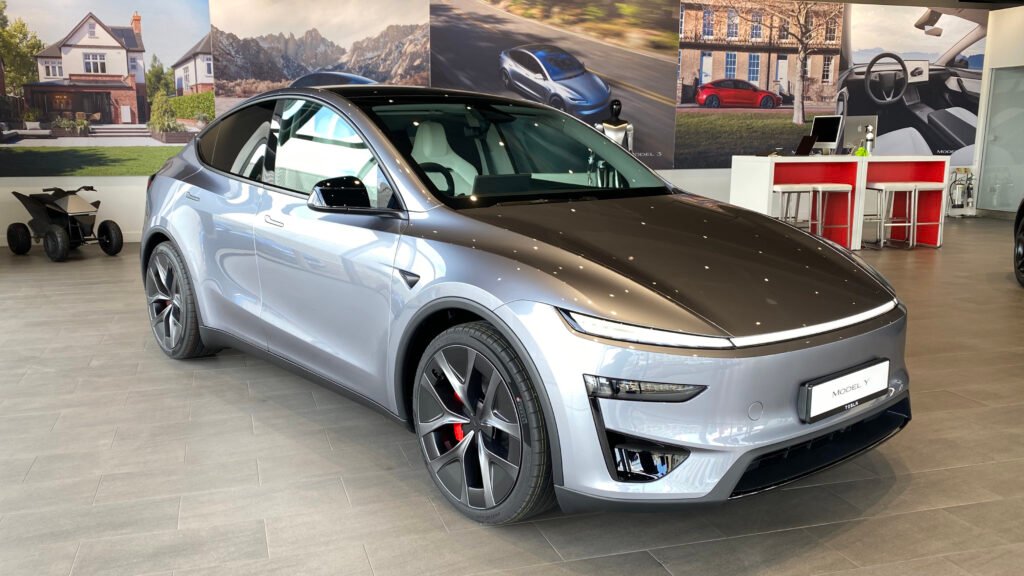
The question of need vs. want
Here’s the rub. The standard Model Y Long Range AWD already does 0-62mph in under five seconds, has slightly more range, and costs about £10,000 less. For daily driving, school runs, and road trips, it might actually be the better choice.
The Performance version feels like an indulgence—a family car with sports car numbers. But will you really unleash 460bhp with children and groceries on board? Probably not.
As one reviewer put it, “The Model Y Performance is brilliant, but it feels surplus to requirements.”
For more Update http://www.dailyglobaldiary.com
Automobile
EV sales skyrocket in the U.S. as buyers race against Sept. 30 tax credit deadline
With federal incentives of up to $7,500 set to expire, Americans rushed to dealerships, sparking a historic surge in electric vehicle sales.

The electric vehicle market in the United States just witnessed a surge unlike anything in recent memory. With federal tax credits for EVs — worth up to $7,500 on new cars and $4,000 on used ones — set to expire on September 30, buyers across the country rushed to secure deals before the clock ran out.
The Republican tax and spending package, passed in July, abruptly brought forward the deadline, creating what analysts have dubbed “the great EV sprint.” To qualify, buyers simply needed a binding contract signed before the deadline, even if delivery of the vehicle was scheduled for later.
“The past couple of weeks — even in the past several days — EV sales just exploded,” said Matt Jones, senior director of industry relations at TrueCar (LinkedIn). “It’s been bonkers.”
Tesla’s countdown and the power of urgency
Some automakers wasted no time amplifying the urgency. Tesla (Wikipedia) prominently featured a ticking countdown clock on its website, reminding buyers of the exact second they had left to lock in their purchase. Other dealers ramped up ad campaigns, targeting consumers who were previously unaware of the tax incentive.
The strategy worked. According to Cox Automotive EV sales in Q3 jumped 21.1% year-over-year, and were 30% higher than in spring 2025. J.D. Power reported that EVs made up over 11% of all U.S. auto sales in August, a figure matched only once before — in December 2024, when buyers rushed to close deals before Donald Trump began his second presidential term.

Used EVs: the hottest ticket under $25k
The frenzy wasn’t limited to new vehicles. Used EVs under $25,000 — the price band eligible for the used tax credit — became the fastest sellers in the market, according to Cars Commerce , parent company of Cars.com.
The surge was so significant that analysts believe it boosted the entire U.S. auto market, with Edmunds forecasting the strongest Q3 new vehicle sales since before the COVID-19 pandemic in 2020.
But will there be an “EV hangover”?
Not everyone is celebrating. Analysts warn that the spike could be followed by a slowdown. “The end of the tax credit created a rush in September, but it could also trigger an EV hangover in the months ahead,” cautioned Ivan Drury of Edmunds.
In other words, consumers who rushed to buy an EV before the deadline likely won’t be shopping again this year, leaving dealerships with fewer potential buyers in the short term.
The Rhodium Group estimates that the early end of the credits could reduce EV sales by 16% to 38% compared to projected growth.
Long-term growth still intact
Despite the uncertainty, long-term EV adoption appears stable. J.D. Power surveys show more than half of new-vehicle shoppers remain interested in going electric within the next year, suggesting that consumer appetite isn’t just tied to government incentives.
Automakers like General Motors and Ford are still heavily investing in EV technology to compete with China’s rapidly expanding market, while also grappling with tariffs and supply chain costs.
The real test, experts say, will be whether automakers can bring down EV prices enough to maintain momentum without federal subsidies. For now, September’s sales boom has shown one thing clearly: when incentives are on the line, American buyers will move fast.
For more Update http://www.dailyglobaldiary.com
-

 Entertainment1 week ago
Entertainment1 week agoAlyssa Milano removes breast implants says she finally feels free and authentic
-

 Technology News1 week ago
Technology News1 week agoChina opens Shanghai digital yuan hub to rival US dollar but here’s the bigger plan
-

 Entertainment6 days ago
Entertainment6 days agoDolly Parton delays Las Vegas concerts by nine months citing health challenges but promises unforgettable return
-

 Politics1 week ago
Politics1 week agoUS Senate to grill Coinbase executive as crypto tax fight heats up next week
-

 Sports1 week ago
Sports1 week agoSnoop Dogg stuns AFL fans with 5 bold promises before grand final show
-

 Politics1 week ago
Politics1 week agoTrump’s CFTC pick Brian Quintenz faces setback as Winklevoss brothers push for new candidates
-

 Entertainment6 days ago
Entertainment6 days agoZoey Deutch engaged to comedian Jimmy Tatro after 4 years of dating with romantic beach proposal
-

 Business1 week ago
Business1 week agoCoinbase Sony and Samsung pour millions into Bastion stablecoin startup surprises crypto world


